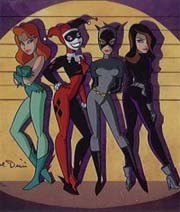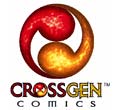 So, as we wrap up 2009, I thought it would be interesting to look at a chronology of some of the digital comic events from the last decade.
So, as we wrap up 2009, I thought it would be interesting to look at a chronology of some of the digital comic events from the last decade.First some background info: many people think comic book scanning was something that started in the 2000s. That's wrong. Comic enthusiasts have been scanning their comics for as least as long as usenet has been around.
The earliest online references I can find go back to 1993, but I've seen comic archives that were older than that. For the most part, these early scans were simply people wanting to preserve their collections in a digital format. Reading separate jpgs in the various image viewers available pre 2000 was not a rewarding experience. That would all change in May of 2000.
Part 1 - The beginning of the end
 May 2000 - CDisplay is added to CNET
May 2000 - CDisplay is added to CNETOkay, let's face it - reading comics with Windows Photo Gallery or InfranView sucked. Before CDisplay, there were a few attempts by other developers to create comic reading programs, but most of them were awkward and slow. What David Ayton's CDisplay did was it was simple to use and comics looked great in it. Within a year of its listing on CNET, CDisplay would become the program of choice for reading comic book archive files, saving us from a world of PDF comic book archives.
Inspired by CDisplay, many other developers have created more advanced programs for reading digital comics. At one time there were over 20 different types of CBR readers available on wikipedia page for comic book archives. Good thing too, as David Ayton no longer supports CDisplay, and his geocities site with a link for the program has been taken down.
March 2001 - FastTrack Protocol established. Peer 2 Peer downloading begins for files other than MP3s.
 Remember Grokster? iMesh? KaZaa? Well all those programs were riding the wave of the FastTrack protocol. The FastTrack protocol allowed for a more distributed network without a centralized sever. (The centralized server was Napster's downfall.) Two years later, FastTrack was the most popular file sharing network, being mainly used for the exchange of music mp3 files. Popular features of FastTrack are the ability to resume interrupted downloads and to simultaneously download segments of one file from multiple peers.
Remember Grokster? iMesh? KaZaa? Well all those programs were riding the wave of the FastTrack protocol. The FastTrack protocol allowed for a more distributed network without a centralized sever. (The centralized server was Napster's downfall.) Two years later, FastTrack was the most popular file sharing network, being mainly used for the exchange of music mp3 files. Popular features of FastTrack are the ability to resume interrupted downloads and to simultaneously download segments of one file from multiple peers.During the same time, true distributed network protocols such as the open source Gnutella, eDonkey 2000 and DC++ also caught on with mainstream P2P file sharers. Likewise spawning other P2P clients, Limewire, Morpheus, and eDonkey. Compared to Napster, these newer networks were able to attain higher maximum speeds because every client also had the capability to share files. Also, since the copyrighted material were stored on individual computers, with the proper disclaimers, the P2P client companies were able to brush off the majority of legal accusations. ~Wikipedia
2001 Bram Cohen develops BitTorrent
 When did you first hear about BitTorrent? I'm betting it was well after 2001. And for good reason - early versions of BitTorrent clients were awkward and not exactly ready for your average user. Also, BitTorrent needed more people with HighSpeed internet access to really shine.
When did you first hear about BitTorrent? I'm betting it was well after 2001. And for good reason - early versions of BitTorrent clients were awkward and not exactly ready for your average user. Also, BitTorrent needed more people with HighSpeed internet access to really shine.However, as the decade progressed, the advantages BitTorrent had over regular P2P programs became apparent. Plus - no spyware! Within 5 years BitTorrent would become the most popular way to download not only single issues, but entire complete runs of comics.
Part 2 - Failed First Steps
But all this talk of a digital comics underground was just a whisper compared the siren call of the new media marketing gurus - all of them heralding the internet as the new way to sell, well, anything (Hey, remember when they thought you would buy pet food online? )Well, at the time, comic companies were still reeling from the 90's speculator crash, so it's no surprise that they would embrace the internet as their would be savior. Unfortunately the first attempts at such ventures were just not compelling enough to survive.
 2001 Warner Bros launches Gotham Girls
2001 Warner Bros launches Gotham GirlsGotham Girls is a Flash animation series about the females of Gotham City, created and produced jointly by Warner Brothers and Noodle Soup Productions. Episodes starred Harley Quinn, Poison Ivy, Batgirl, Catwoman and Zatanna in short stories of varying length about the daily lives of the characters (from the DC Comics universe). ~ Wikipedia
Okay, while very cool, the Gotham Girls animations are not comic books by any stretch of the term, but aside from this and a few very random PDF versions of some titles, DC's Digital output during this time period is pretty much nonexistent.
2001 Marvel's Dot Comics Flash based comics
A for effort - D for presentation.
Marvel's Dot Comics was an awkward Flash based application which presented a limited selection of modern Marvel comics in an attempt to drive more readers to current ongoing titles. The combination of limited titles, awkward UI and hard to read text garnered much hate among the messageboards at the time. Yet, despite the haters, the application proved successful in distributing comics to people who weren't going into comic shops during the time of he Spider-Man movie...
At its peak, which was shortly after the film came out, about 100,000 comics were downloaded per day, said John D. Roberts, a senior developer for Marvel's dot-comics. The rate has slowed to about 80,000 per day. Marvel's print circulation, for all its comic books, is usually about 5 million per month*, said Bill Rosemann, Marvel's marketing communications manager. ~Chicago Tribune
I suspect that after the initial flood of Spider-Man movie fans, the site visitors trickled down to nothing. Still, the surge during the movie was most likely one of the driving forces in developing the better Marvel Comics Unlimited website. But more on that in a moment.
*Question: When was the last time Marvel's circulation was really 5 million a month? Doesn't that number sound a little inflated?
 March 2002 - CrossGen Comics on the Web
March 2002 - CrossGen Comics on the WebAh, Crossgen! While we didn't like your comics (okay, some of them were good) we admired your spunk! Ever wonder what type of company you would get if you let an internet millionaire and a Gym teacher run it? Well, wonder no more! Entrepreneur Mark Alessi wanted to make comic books more accessible to the masses by shunning superheroes and aiming at a wider demographic than the Marvel or DC. This was a good thing.
However, where he sort of went wrong was his first wave of titles were too slow and boring to compete in the comic shops. By the time Crossgen was able to figure out exactly how to create more exciting comics, it was a little too late. Arguably, Crossgen's greatest success was their Comics on the Web initiative.
Comics on the Web was a Flash based UI which ran in any web browser and allowed users to subscribe to Crossgen comics and read them online. Developed by famous Flash developer Gabo Mendoza, the CoW system had many advantages over Marvel's Dot Comics, including the ability to hover over small text balloons, which would autmatically enlarge them.
Later versions of the CoW system would bring improved reading enhancements. The online library was estimated at 160 issues and 4,400 pages by the end of 2002. ~wikipedia
Part 3 - Digital Comics move into the mainstream
Around 2003 two things caused Digital Comics to move from a arcane enthusiasts pastime to a watercooler topic at the local comic shop.The first was the rise of high speed internet connections in homes...
High speed internet access became an extremely rapidly developing market in many regions in 2000. Studies found that broadband internet usage in the United States grew more than 24% between 2000 and 2003. ~ezinearticles
The other was Rich Johnston's famous Lying in the Gutters post of May 14th, 2003. (And when I say famous, I mean I still remember it.) Never before had the topic of comic downloading been discussed in such a widely read venue. In a section called YOU KNOW, WE WERE ALWAYS TOLD TO SHARE WHEN WE WERE KIDS… Rich painted quite an alluring picture of the comic scanning underground...
The internet file-sharing revolution has progressed to such a level that it is possible not only to download 90% of the back-catalogue of DC and Marvel, but also to download more or less DC and Marvel's entire monthly output within days of the in-store dates.
And any Web sites that actually mention it only reveal a tiny part of the actual thing. There's a filesharing app called DC++, which is basically a server/client app where people set up very focused servers that specialise in a particular kind of shared files. There are a handful for comics.
It doesn't grow very quickly because there's no advertising and very little word-of-mouth, but when it hits something a bit more widespread like BitTorrent, suffice to say, DC and Marvel will really have to take note.
 2004 - Marvel and Topics Entertainment release 40 years of Spider-Man on CD
2004 - Marvel and Topics Entertainment release 40 years of Spider-Man on CDReading Digital Comics took a bit step towards legitimacy with the release of 501 Spider-Man comics on CD. At the SRP of $49.99 it basically worked out to ten cents an issue. Pretty cool aye?
Pros: This was the first legitimate release of a complete run of comics by a major publisher in a digital format.
Cons: It was spread out over 11 cds and in PDF format.
Currently, this set can still be purchased at Eagle One Media (along with a few other Marvel collections) which is strange because in 2007 a big deal was made in the fact that Graphic Image Technology Inc. (GIT) lost the license to sell Marvel Comics collections on DVD.
This article is running crazy long, so I'm going to break it up here.
Come back Friday for part 2, and I'll finish up the decade and also present my predictions for the next decade. :)
- Jim

2 comments:
Good article, Jim, though there were a couple of things you forgot to mention--or at least didn't do so explicitly, though you may have intended to include them in your discussion of indvidual jpegs.
There were archival CDs of images of golden age comics available at least in the late 90s. Also, there were comics pages trade on the usenet. Both of these things, I suspect, were the impetus for early golden age comics enthusiast sites.
Trey, you are correct on both counts - in fact many of those archival CDs (of Golden Age Public Domain material and modern era comics) were for sale on eBay during the 90's. Some of them came with homegrown image viewers, some were just a mess of folders with jpgs.
Post a Comment